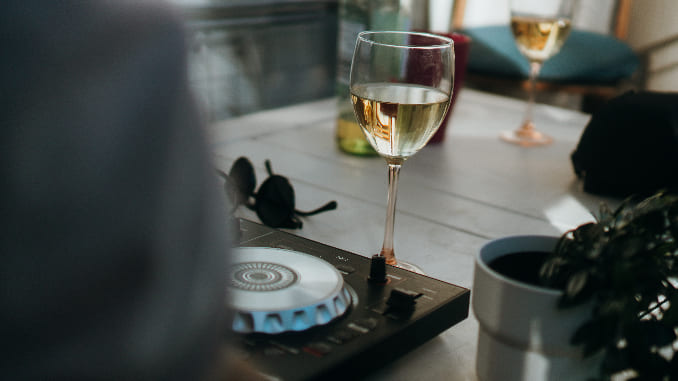For this tasting experience, we’re going back to the mysterious musical mixing, mashing and making of beats born from the most underground corners of post-millennial hip hop. Imagine mainstream legends like Missy Elliott in the front window of every record store and Timbaland on the radio, and meanwhile, sampling superstars like DJ Shadow maintain an underground indie rap vibe that feeds off the rush of making raw, electronic music at the turn of the century.
The nature of how this music is made is important for understanding the general nostalgia of the time. Sample-based compositions involve carefully integrating unrelated pieces into something smooth, beautiful and authentically new. Remixing and sampling continue to evolve today, as artists find more digital tools and new platforms to enhance the recomposition process. But in the early 2000s, digital composition was still just a baby, and electronic sampling required an expert composer to handpick media and cleverly pair pieces together.
So, it’s pretty clear why I absolutely have to pair this music with a wine tasting—it creates the perfect sampling experience.
Deadringer: Tracks 1-8
This album must open with a pét nat. Pétillant naturel wine is made from the ancestral winemaking method where winemakers let the wine finish naturally fermenting in the bottle, creating an explosion of carbon dioxide when it’s opened. These first few songs like “The Horror” and “Ghostwriter” call for this kind of grand opening; something full and floral like Jousset’s pét nat rosé “Éxilé” or Kokomo Winery’s “Breaking Bread” pét nat zinfandel would be perfect.
Deadringer: Tracks 9-16
To finish out this first album, I challenge you to find an experimental summer wine passion project. Winemakers all over the U.S. are remixing traditional methods by creating new, funky blends. A perfect example of this is “Babel” by Lares Wines. This is a 70% Pinot Noir, 20% Pinot Gris and 10% Riesling monster able to cohesively manage contrasting flavors of meat and fruit with grit and petroleum. Having met winemaker Luke Wylde, I know he puts the same careful, curious passion into this blend that RJD2 put in his iconic first studio album.
Bonus Round: The Horror EP
Early in 2003, RJD2 released an EP featuring retro-vibe remixes of favorites like “Ghostwriter” and “June,” instrumental track versions and the prequel to “Good Times Roll.” Some might be ready to skip right onto the next studio album, but for those of you enjoying the slow, sweet seduction of wine and instrumental hip hop, do a bonus round with The Horror EP and pair with a bottle of Gavi.
Of the Italian white wines, Gavi is one of the freshest-tasting and most perfectly balanced. The Cortese grape variety is light-bodied but highly acidic, and it expresses fruit character that complements its dryness. Banfi Wines has a super impressive Principessa Gavia Gavi that has saved me multiple times this summer from the excruciating heat. It’s got intense floral aromas and is a superb pairing with cheese, charcuterie and fried appetizers for those of you using this bonus round as a snack break.
Since We Last Spoke: Tracks 1-6
Carménère is a Bordeaux original, but it’s now mostly grown in Chile, so it’s got the same character as classic tunes frequently sampled in hip hop music. Carménère is a mix of both sweet and savory flavors, often giving notes of berries and baking spices intermingled with peppercorn and bell peppers.
It’s definitely one of those perfect dinner pairing wines but has got enough complexity to be a whole experience on its own. Carménère is surprising and sophisticated like the album’s namesake introductory song.
Since We Last Spoke: Tracks 7-12
The last half of this album showcases RJD2’s divergence from conventional style in order to exceed audience expectations. These tracks illuminate layers of sound, pairing moody tunes with funky beats in the most balanced, cohesive way.
We’re sending this off with a glass of Angelica dessert wine. Fortified wines often provide a soulful, seductive experience, so Angelica fits the conclusion of RJD2’s masterpieces. Angelica is an exemplary remix wine—it’s made with Mission grapes (which are making a comeback these days), and winemakers crucially mix in spirits at the very beginning of the fermentation process to give Angelica its signature flavors of roasted figs and toasted walnuts.
Appreciating instrumental indie rap and underground post-millennial hip hop is reminiscent of appreciating the layers of flavor and effort that go into wine. Take a second to wind down this weekend and revel in simple artistic pleasures.
